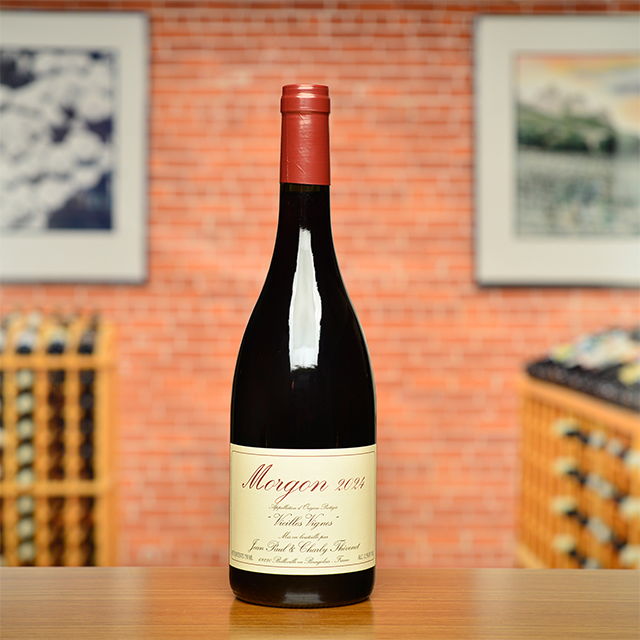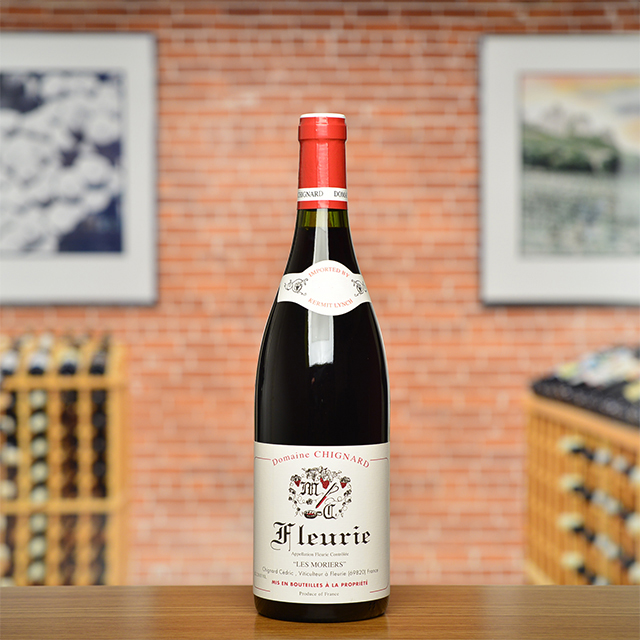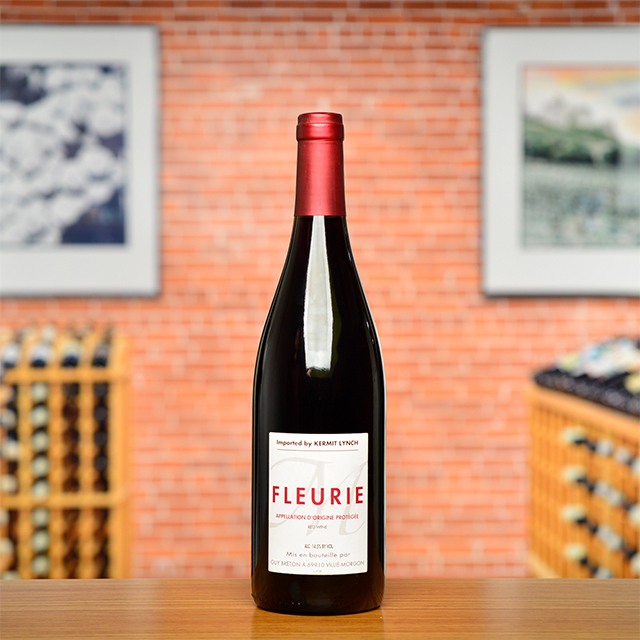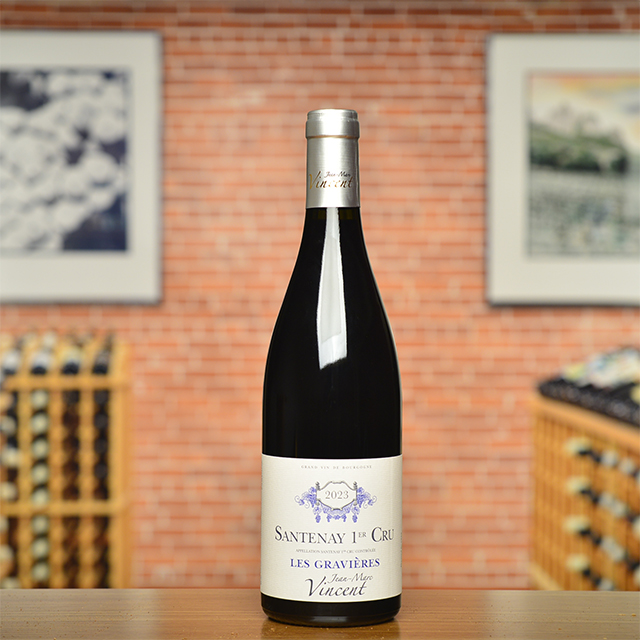Notify me
2020 Juliénas “Beauvernay”
Domaine Chignard
Juliénas is perhaps the most diverse of Beaujolais’s ten crus, making it difficult to generalize about the character of its wine. Soils range from granite to schist with pockets of clay, sand, and alluvial deposits, while a wealth of different exposures and elevations also contribute to its countless possible expressions of the Gamay grape. Site is therefore crucial, and the hill of Beauvernay is certainly among the top vineyards in the appellation. Cédric Chignard inherited this small plot of land from his mother, and the old vines here now produce a fine companion to the lovely Fleurie upon which Michel, Cédric’s father, built the domaine’s reputation. At high altitude on steep slopes of schist-like blue volcanic stone, Beauvernay yields bright fruit with racy acidity and an intense mineral backbone—a vin de terroir if there ever was one. An electric lightning bolt of Gamay, this Beaujolais can be enjoyed today or aged for several years.
—Anthony Lynch
| Wine Type: | red |
| Vintage: | 2020 |
| Bottle Size: | 750mL |
| Blend: | Gamay |
| Appellation: | Juliénas |
| Country: | France |
| Region: | Beaujolais |
| Producer: | Domaine Chignard |
| Winemaker: | Michel & Cédric Chignard |
| Vineyard: | Planted in 1946, 1 ha |
| Soil: | Roche bleue (diorite) |
| Aging: | Aged in old foudres (large oak barrels) for 13 months |
| Farming: | Lutte Raisonnée |
| Alcohol: | 13.5% |
More from this Producer or Region

2022 Côte de Brouilly
France | Beaujolais
A relatively new addition to Guy Breton’s Beaujolais lineup, this exuberant Côte de Brouilly is flat-out delicious.

2023 Chénas “Les Blémonts”
France | Beaujolais
Structured yet full of energy, with notes of blueberry, spice, and other things nice.

2024 Morgon “Vieilles Vignes”
France | Beaujolais
December Club Rouge ~ If Beaujolais were Burgundy, we might consider Morgon to be Vosne-Romanée, with its haunting perfume and silky texture, the proverbial iron fist in a velvet glove.

2024 Fleurie “Les Moriers”
France | Beaujolais
Chignard’s Les Moriers, coming from their old vines in the heart of this parcel, has distinction a-plenty, with a great mouthful of Gamay fruit to boot.

2021 Beaujolais Blanc “Terrain Rouge”
France | Beaujolais
In classic Thévenet fashion, the wine is bright and energetic—a snappy Chardonnay that tastes like fresh green apple skin with a whisper of gentian.

2024 Chiroubles “Cuvée Léa”
France | Beaujolais
Floral and succulent, bursting with notes of little red berries, but it is also delicate and light on its feet.

2024 Côte de Brouilly
France | Beaujolais
Brambly and mineral, this bottling exudes both the convivial charm of Gamay and the crunchy intensity of the Côte de Brouilly.

2024 Fleurie
France | Beaujolais
Guy Breton’s Fleurie is delicate, with buffed tannins and juicy fruit; it will leave your thirst slaked and your heart feeling light.

2024 Morgon “Vieilles Vignes”
France | Beaujolais
Leave it to Breton to take summer heat and turn it into a light summer breeze in a glass.

2024 Brouilly “Reverdon”
France | Beaujolais
This bottling is classic Brouilly, balanced and old-school, and showcases the beauty of Gamay.
About The Producer
Domaine Chignard
About The Region
Beaujolais

After years of the region’s reputation being co-opted by mass-produced Beaujolais Nouveau and the prevalence of industrial farming, the fortunes of vignerons from the Beaujolais have been on the rise in the past couple of decades. Much of this change is due to Jules Chauvet, a prominent Beaujolais producer who Kermit worked with in the 1980s and arguably the father of the natural wine movement, who advocated not using herbicides or pesticides in vineyards, not chaptalizing, fermenting with ambient yeasts, and vinifying without SO2. Chief among Chauvet’s followers was Marcel Lapierre and his three friends, Jean Foillard, Guy Breton, and Jean-Paul Thévenet—a group of Morgon producers who Kermit dubbed “the Gang of Four.” The espousal of Chauvet’s methods led to a dramatic change in quality of wines from Beaujolais and with that an increased interest and appreciation for the AOC crus, Villages, and regular Beaujolais bottlings.
The crus of Beaujolais are interpreted through the Gamay grape and each illuminate the variety of great terroirs available in the region. Distinguishing itself from the clay and limestone of Burgundy, Beaujolais soils are predominantly decomposed granite, with pockets of blue volcanic rock. The primary vinification method is carbonic maceration, where grapes are not crushed, but instead whole clusters are placed in a tank, thus allowing fermentation to take place inside each grape berry.
Much like the easy-going and friendly nature of many Beaujolais vignerons, the wines too have a lively and easy-drinking spirit. They are versatile at table but make particularly good matches with the local pork sausages and charcuterie. Though often considered a wine that must be drunk young, many of the top crus offer great aging potential.
More from Beaujolais or France
2024 Morgon “La Roche Pilée”
Jean-Paul et Charly Thévenet France | Beaujolais
2024 Régnié “Grain & Granit”
Jean Paul et Charly Thévenet France | Beaujolais
2024 Beaujolais-Villages
Alex Foillard France | Beaujolais
2024 Fleurie “Les Moriers”
Domaine Chignard France | Beaujolais
2024 Beaujolais MAGNUM
Domaine Dupeuble France | Beaujolais
2023 Moulin-à-Vent “Sous la Roche”
Domaine Thillardon France | Beaujolais
2021 Brouilly
Alex Foillard France | Beaujolais
2023 Beaujolais Blanc “Clos de Rochebonne”
Château Thivin France | Beaujolais
2024 Chiroubles “Cuvée Léa”
Guy Breton France | Beaujolais
2018 Brouilly
Alex Foillard France | Beaujolais
2024 Brouilly “Reverdon”
Château Thivin France | Beaujolais
2023 Chénas “Les Blémonts”
Domaine Thillardon France | Beaujolais
2024 Morgon “La Roche Pilée”
Jean-Paul et Charly Thévenet France | Beaujolais
2024 Régnié “Grain & Granit”
Jean Paul et Charly Thévenet France | Beaujolais
2024 Beaujolais-Villages
Alex Foillard France | Beaujolais
2024 Fleurie “Les Moriers”
Domaine Chignard France | Beaujolais
2024 Beaujolais MAGNUM
Domaine Dupeuble France | Beaujolais
2023 Moulin-à-Vent “Sous la Roche”
Domaine Thillardon France | Beaujolais
2021 Brouilly
Alex Foillard France | Beaujolais
2023 Beaujolais Blanc “Clos de Rochebonne”
Château Thivin France | Beaujolais
2024 Chiroubles “Cuvée Léa”
Guy Breton France | Beaujolais
2018 Brouilly
Alex Foillard France | Beaujolais
2024 Brouilly “Reverdon”
Château Thivin France | Beaujolais
2023 Chénas “Les Blémonts”
Domaine Thillardon France | Beaujolais
Kermit once said...

Kermit once said...
If you're looking for value, look where no one else is looking.
Inspiring Thirst, page 211


















